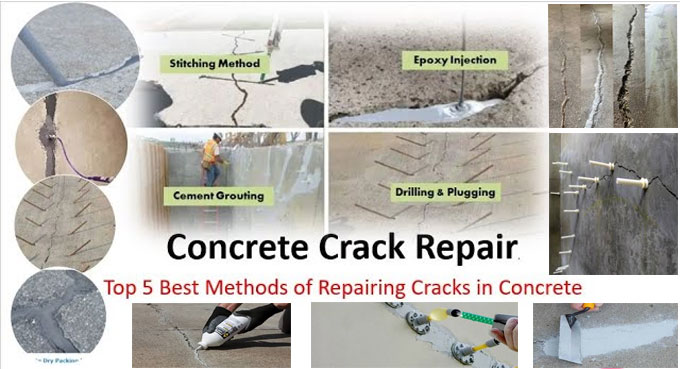NEWS | SOFTWARE | SHEET
Concrete Crack Repair: How to Fix Cracks in Concrete
Cracks in concrete are a common problem in the construction industry. The cracks in the concrete structure may affect the foundation structure of the building. Concrete cracks can occur due to several reasons including repeated thawing or freezing, the pressure of the heavy loads or tree roots, or the shift in the ground can lead to damage to the concrete of the construction structure. So, it is important to fix the concrete cracks to prevent damage to the entire construction structure.
When concrete crack needs to be repaired
The hairline cracks in the concrete or cracks under 1/4-inch wide do not indicate serious damage, but, in the case of water getting into those cracks, freezing and expanding the concrete and heavy vehicles driving over those cracks continuously, the cracks become bigger and the repairing process should be initiated. In the case of deep cracks, filing the concrete cracks is necessary. The uneven cracks that are bigger than an inch wide occur in the older driveways which indicate the structural issues in the driveways. In this regard, taking the advice of the professional regarding repairing and replacing the driveways is necessary to make the driveway smooth and drivable again.
Methods of repairing and sealing concrete crack
There are different types of methods of repairing and sealing the cracks of the concrete which include:
Epoxy injection
This is one of the popular methods of concrete crack repair and sealing. This method is especially used for structural cracks in the concrete. The high-strength epoxy resin has been injected in the concrete crack in this process which helps to bond the concrete pieces as well as helps to restore the structural integrity. This method is appropriate for repairing concrete slab cracks in those areas where durability and strength are important.
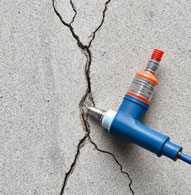
Concrete patching
The concrete patching method is effective for repairing surface-level cracks. This is one of the straightforward and cost-effective solutions in which the cracks are cleaned and filled with the concrete patching compound. For minor concrete cracks, concrete patching is effective which helps to restore the surface appearance and functionality of the construction structure.

Polyurethane foam injection
This is another important method of concrete crack repair which is used for repairing the non-structural cracks. In this method, a flexible and water-resistance foam has been used in the concrete crack which has been expanded to fill the void. This type of foam is very effective for sealing concrete cracks as well as preventing water infiltration.
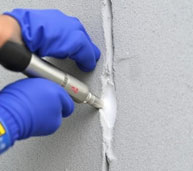
Dry packing
This is the manual method for repairing and sealing large concrete cracks. In this method, a dry cement mixture has been applied into the concrete crack which helps to ensure the tight fit of the concrete. This method helps to provide long-lasting and durable solutions for concrete cracks. In industrial settings, this concrete crack repair method has been used.
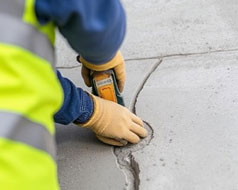
Cement grouting
This is the traditional method of repairing and sealing concrete which is particularly used for voids or large cracks. This method can be used in various applications including retaining walls or foundations as well as it is useful for repairing method of the concrete slab crack.
Routing and sealing
In the routing and sealing method, at first, the crack has been widened and then the crack has been filled with a flexible sealant. For those cracks which are subject to movement, this method is effective as the sealant is useful for accommodating the slight shifts in the concrete. For repairing the concrete cracks in the driveways or sidewalks, this technique is commonly used which helps to prevent further water filtration and damage.
Overlaying
In this concrete crack repairing method, a new layer of concrete has been applied over the existing crack surface. This method helps to improve the overall appearance of the concrete. This method is appropriate for repairing concrete floor cracks in residential and commercial settings which helps to provide a fresh and smooth surface.
Stitching
This structural repair method involves drilling holes at both sides of the concrete crack. In this method, U-shaped bars or metal staples have been installed which helps to hold the concrete together as well as prevent further movement. For repairing the concrete slab cracks in those areas where additional reinforcement is required, the stitching method is effective.
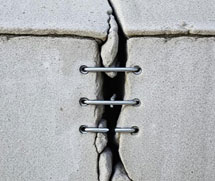
Slab jacking
This concrete crack repairing method is also known as mud jacking method which helps to lift and level sunken concrete slabs.
A slurry mixture has been injected under the slab in this method which helps to raise the concrete slab back to its original position. The slab jacking method is commonly used for repairing the concrete of patios, driveways, and other large spaces concretes.
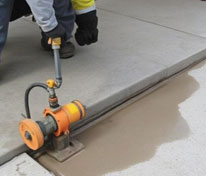
Different ways to prevent concrete cracks
During the installation process of the concrete in the construction site and the first week of the curing process, preventive measures towards the concrete crack can be taken. The preventive measures of the concrete cracks are as follows:
- High-quality concrete should be used along with the proper ratio of cement, water or other ingredients to prevent the chances of concrete cracks in future.
- During the drying process of the concrete in the first week, water should be sprayed several times a day and this is especially important in case the weather is dry and hot.
- New concrete also weakens due to cold temperatures. In this context, concrete can be covered with a concrete insulating blanket in case the temperature dips below 50 degrees Fahrenheit. This will uncover for spraying with the water after the temperature warms up again.
- Adding control joints is also effective in decreasing shrinking and cracking.
- It also needs to ensure that the base in which concrete has been poured should have to be well compacted.
- The concrete should be reinforced with mesh, rebar or other types of strong materials.
